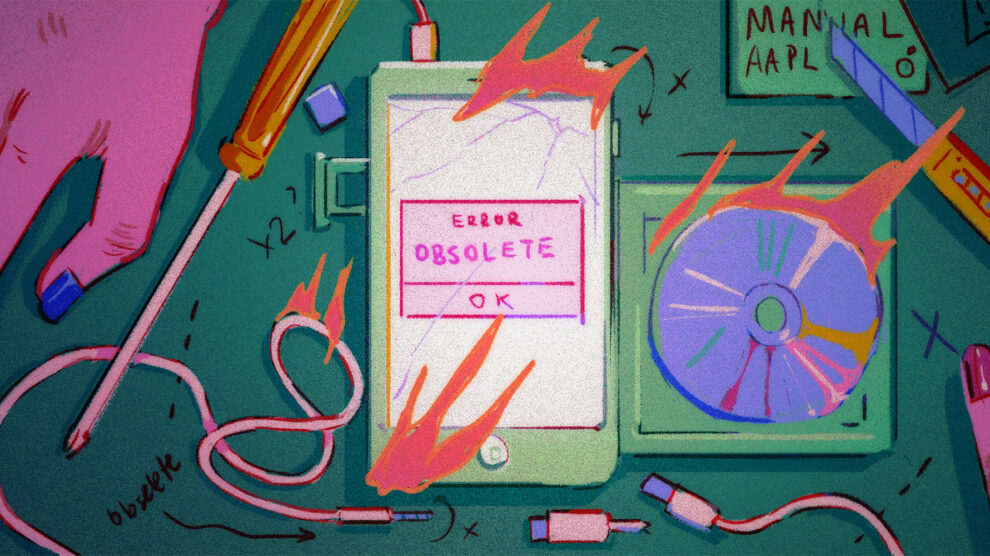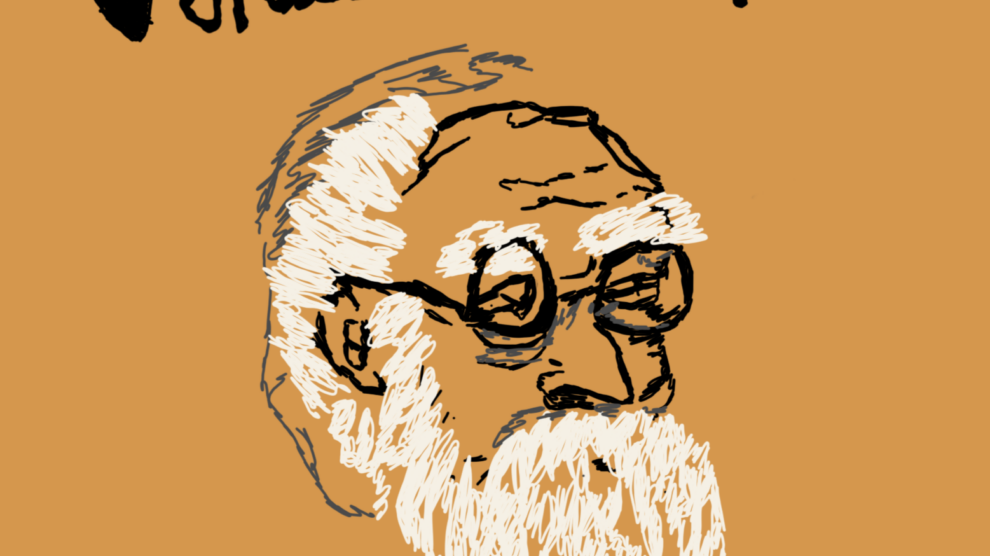We Need Community Control of Technology, Nothing Less
A Review of Charlton D. McIlwain’s Black Software
By Jensine Raihan
Volume 24, Number 2, Don’t Be Evil
 Black Software: The Internet and Racial Justice, from the AfroNet to Black Lives Matter by Charlton D. McIlwain proposes that Black Americans use technology to outrun white supremacy, rather than overthrow it. Black Software discusses the history of the late-twentieth century digital revolution and its relationship with Black Americans in two parts. The first describes pioneering Black technologists and founders of digital communities throughout the United States. The second chronicles the use of tech to optimize the policing of Black Americans, and crush what were seen as criminal riots endemic in Black communities.
Black Software: The Internet and Racial Justice, from the AfroNet to Black Lives Matter by Charlton D. McIlwain proposes that Black Americans use technology to outrun white supremacy, rather than overthrow it. Black Software discusses the history of the late-twentieth century digital revolution and its relationship with Black Americans in two parts. The first describes pioneering Black technologists and founders of digital communities throughout the United States. The second chronicles the use of tech to optimize the policing of Black Americans, and crush what were seen as criminal riots endemic in Black communities.
McIlwain links the digital revolution to the start of the automation of criminalizing Black communities. He demonstrates how technology, rather than being a liberator or revolutionary force, works to accommodate the hegemonic aspirations of society by increasing control of workers, especially marginalized ones. Despite this important contribution, McIlwain’s book largely misses the mark.
Technology, in practice, is not neutral but subject to political will. It did not matter how many Black Americans painstakingly trained themselves to use computers and built their own communities in which they learned more about their history and themselves. Although this surely was formative for those who were able to use computers and access these communities, access in and of itself was not sufficient to transform Black people’s relationship to technology. As long as technological production is in the control of political elites and the intelligentsia, computers will be wielded to accommodate the political aspirations of those in power, which includes the continuous subjugation of Black Americans. McIlwain falls into the trap of assimilation because he does not contend with the reality of private ownership of technology: that this is the driving force for/against Black communities, rather than the number of Black engineers and entrepreneurs who are able to “make it.”
The first part follows a handful of Black Americans who benefited from affirmative action legislation, and succeeded due to pressure from the civil rights movement. These pioneers were among the few who were able to join the middle-class through their access to the digital revolution. The first is Derrick Brown, an engineer who founded and maintained the Universal Black Pages on the World Wide Web: a directory of Black sites and digital communities. While Brown was attending college, he fought against the racist climate in Clemson University and supported other Black engineers in navigating the academy. The second is William Murrell, one of a handful of Black technicians hired at International Business Machines (IBM) after the company’s racist hiring practices were exposed. Murrell then went on to run MetroServe Computer Company, a renowned computer store in Boston.
Brown, Murrell, and the other Black engineers and technicians that McIlwain discusses were part of a tiny minority of Black Americans able to find success in the age of the digital revolution, despite the white supremacy embedded in the tech industry. Each of them had to overcome the racist atmosphere individually. These stories are therefore literally extraordinary – contrary to McIlwain’s intention, they actually highlight the fact that most Black and working-class Americans did not benefit from the digital revolution. Rather, the medium of oppression that these communities faced was reincarnated with the advancement of technology.
In part two, McIlwain’s strengths shine through as he clearly reports on how tech has been wielded to suppress Black resistance. However, he still arrives at an individualized solution—one that does not challenge racial monopoly capitalism but fits neatly within it. Here, he begins with the Watts riot in Los Angeles: a rebellion led by Black Americans protesting systemic oppression and white supremacy. McIlwain recalls that this event, along with widespread revolt against the subjugation faced by Black Americans, compelled political elites to develop technological systems to curtail this resistance.
McIlwain then compellingly demonstrates how the establishment ignored its own software’s results when it clearly identified US white supremacy. The Simulmatics Corporation, a contractor for the US military, used big data to simulate and predict political scenarios.1 During the Vietnam war, it was used in an effort to sabotage the National Liberation Front by coercing insurgent members to abandon the revolutionary party. Here, McIlwain summarized the findings which showed that “white society is deeply implicated in the ghetto. White institutions created it, white institutions maintain it, and white society condones it.”
President Lyndon B. Johnson and his administration ignored this report and instead coalesced IBM with police departments. Military command and control systems were adapted and deployed by domestic police in order to destroy Black rebellion against white supremacy. Police departments all over the country began employing ALERT II predictive crime software to legitimize police occupation of Black communities. Today, grassroots organizations like Stop LAPD Spying continue to fight against predictive policing and the many other ways technology has been employed to destroy marginalized communities.
McIlwain’s Black Software lacks a systemic analysis of technology. He ignores the exploitation of workers, including Black workers, that made the digital revolution possible, and therefore the intersectionality of class and race.
Although McIlwain is acutely cognizant of the rule of white supremacy in the United States, he fails to understand its antidote despite it being under his nose. He describes the work of the Student Nonviolent Coordinating Committee, the Black Panther Party (BPP), Black Youth Project 100, and the likes of Alicia Garza—all of whom invested in the question of overthrowing white supremacy as opposed to outrunning it. McIlwain fails to mention that in 1972, during the time he recollects, the BPP added “community control of modern technology” to the 10th point of their conspicuous 10-point program so that it stated, “We want land, bread, housing, education, clothing, justice, peace and people’s community control of modern technology.”2
McIlwain doesn’t acknowledge what Huey P. Newton, co-founder of the BPP, at that time was keen to point out, “Technological advancements have been gained through expropriation from the people, including slavery proper but also chattel slavery followed by wage slavery. With this expropriation, a reservoir of information was created so that Americans could produce the kinds of experimental agencies and universities that created the information explosion.”3 Black Americans are entitled to the fruits of the digital revolution not because of moral reasons but because the information age was a direct product of the exploitation of Black Americans and other waged workers. This perspective is completely ignored by McIlwain in his work.
McIlwain’s own perspective is emulated when he quotes Timothy Jenkins, a South African anti-apartheid activist, in his “Publisher’s Note” from the May 1994 issue of ‘American Visions’: “We [Black Americans] who were the victims of the technology revolution in agriculture and who were ignored by the Industrial Revolution cannot afford to be bypassed by the multimedia communications revolution inherent in the emerging information superhighway.” Like McIlwain, Jenkins ignores the systemic nature of both the Industrial Revolution and the digital revolution. The Industrial Revolution didn’t bring prosperity to the majority of Americans but instead brought boundless wealth to a handful of capitalists. Thus, far from desiring the destruction of systemic oppression and exploitation, Jenkins is invested in his own bourgeois aspirations in the current system. Jenkins hoped to benefit from the digital revolution in the same way capitalists benefited from the Industrial Revolution. This perspective ignores the masses of workers whose quality of life deteriorated as a result of the Industrial Revolution, and similarly the many people whose exploitation powers the digital revolution.
McIlwain’s Black Software lacks a systemic analysis of technology. He ignores the exploitation of workers, including Black workers, that made the digital revolution possible, and therefore the intersectionality of class and race. Instead, McIlwain argues that Black people weren’t given a seat at the table of the digital revolution. His book is largely interested in Black people gaining access to white bourgeois society by becoming entrepreneurs in the digital revolution as opposed to promoting a society in which technology serves the interests of people instead of capitalists.
Black Software: The Internet and Racial Justice from AfroNet to Black Lives Matter
Charlton D. McIlwain
New York: Oxford University Press
2020
309 Pages
If you liked this article, please consider subscribing or purchasing print or digital versions of our magazine. You can also support us by becoming a Patreon donor.
Notes
- Jill Lepore, “How the Simulmatics Corporation Invented the Future,” New Yorker, July 27, 2020, https://www.newyorker.com/magazine/2020/08/03/how-the-simulmatics-corporation-invented-the-future.
- Naomi Zewde, “How the Black Panthers Paved the Way for New Progressivism,” Roosevelt Institute, Feb 20, 2020, https://rooseveltinstitute.org/2020/02/20/how-the-Black-panthers-paved-the-way-for-new-progressivism/.
- Huey P. Newton, “The Technology Question: 1972,” in The Huey P. Newton Reader, ed. David Hilliard and Donald Weise (Seven Stories Press, 2002), 256.





